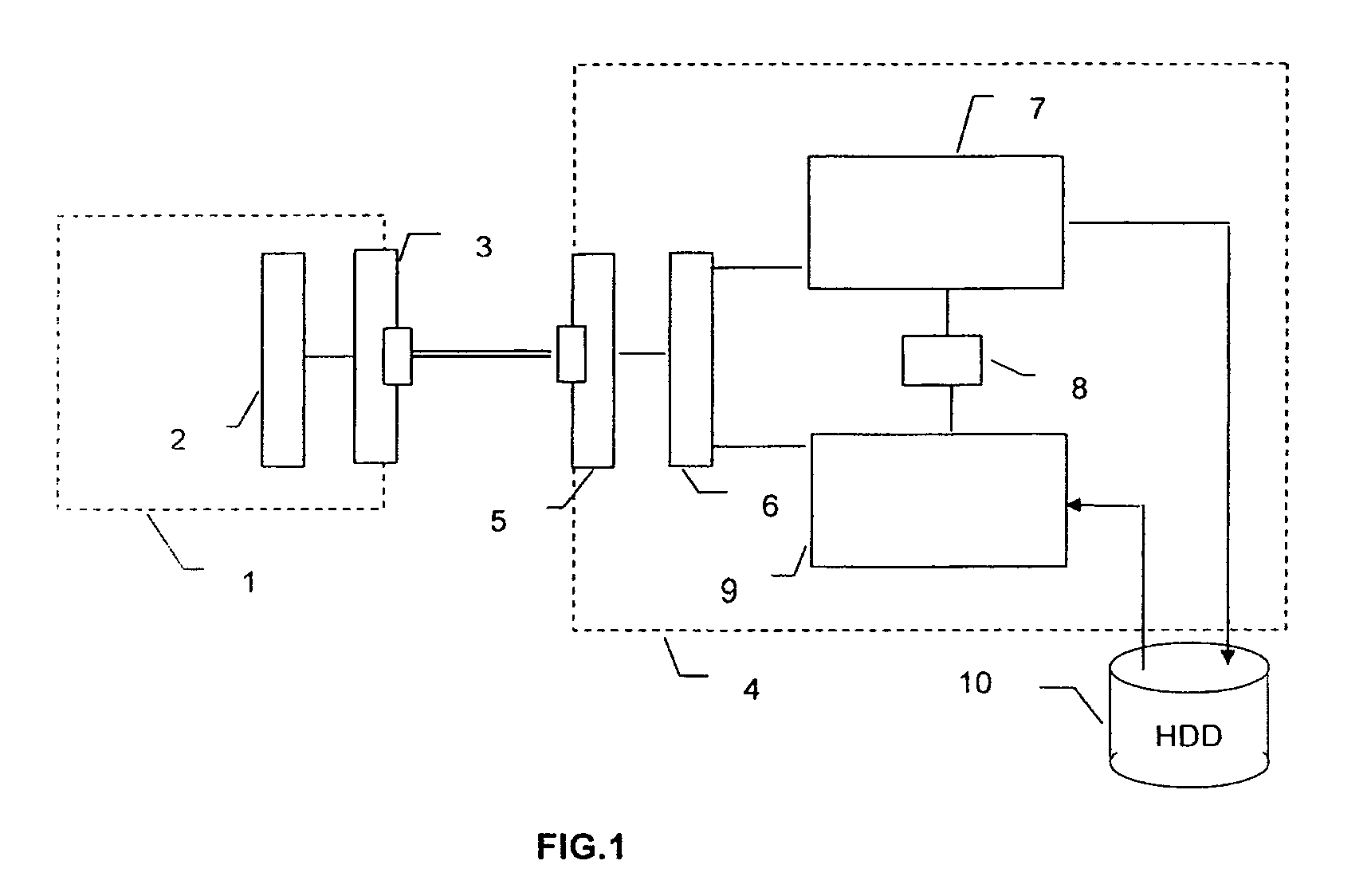Method and device for video data transmission for implementing special modes
a video data and special mode technology, applied in the field of special mode video data transmission methods and devices, can solve problems such as drift, inability to solve problems, and use of tagging in relational relationships
- Summary
- Abstract
- Description
- Claims
- Application Information
AI Technical Summary
Benefits of technology
Problems solved by technology
Method used
Image
Examples
Embodiment Construction
[0039]An example of a device to which the invention applies, described in published patent application No. 2 811 846, is reviewed below. It is represented in FIG. 1. It concerns a device for storing compressed data on a hard disk, linked to a satellite receiver, and for reading this data via a 1394 bus.
[0040]A receiver 1 equipped with a 1394 interface circuit receives an audio-video data stream compressed according to the MPEG 2 standard originating from a satellite transmission, called a transport stream TS in the standard. The signal received by the receiver is, among other things, demodulated to supply a baseband signal. This transport stream comprises a number of programmes. It can be transmitted unchanged or after filtering to select only the packets corresponding to a chosen programme.
[0041]A 1394 interface circuit incorporated in the receiver is used to transmit this data stream over the 1394 link. This circuit comprises, according to the designations in the standard, a “link...
PUM
 Login to View More
Login to View More Abstract
Description
Claims
Application Information
 Login to View More
Login to View More - R&D
- Intellectual Property
- Life Sciences
- Materials
- Tech Scout
- Unparalleled Data Quality
- Higher Quality Content
- 60% Fewer Hallucinations
Browse by: Latest US Patents, China's latest patents, Technical Efficacy Thesaurus, Application Domain, Technology Topic, Popular Technical Reports.
© 2025 PatSnap. All rights reserved.Legal|Privacy policy|Modern Slavery Act Transparency Statement|Sitemap|About US| Contact US: help@patsnap.com



